How deep to plant potatoes has a major impact on the harvest. Deep versus shallow potato planting will each yield a harvest at a different time of the year. In addition, it will affect the quality of your potatoes, their size, nutritional value, and so much more.
Plant potatoes in a trench about 4 inches deep for shallow planting. Seedlings will produce a crop within 2 – 4 weeks, ensuring an early harvest, possibly as early as June. Plant potatoes about 7 – 8 inches deep in the soil for deep planting.
Keep in mind that the deeper the seedlings are planted the longer it will take for them to grow foliage and develop into potatoes.
By planting both shallow and deep, you can assure a staggered harvest throughout the harvesting season so long as you keep planting until May.
Deep planting means the potatoes will be low maintenance and grow optimally.
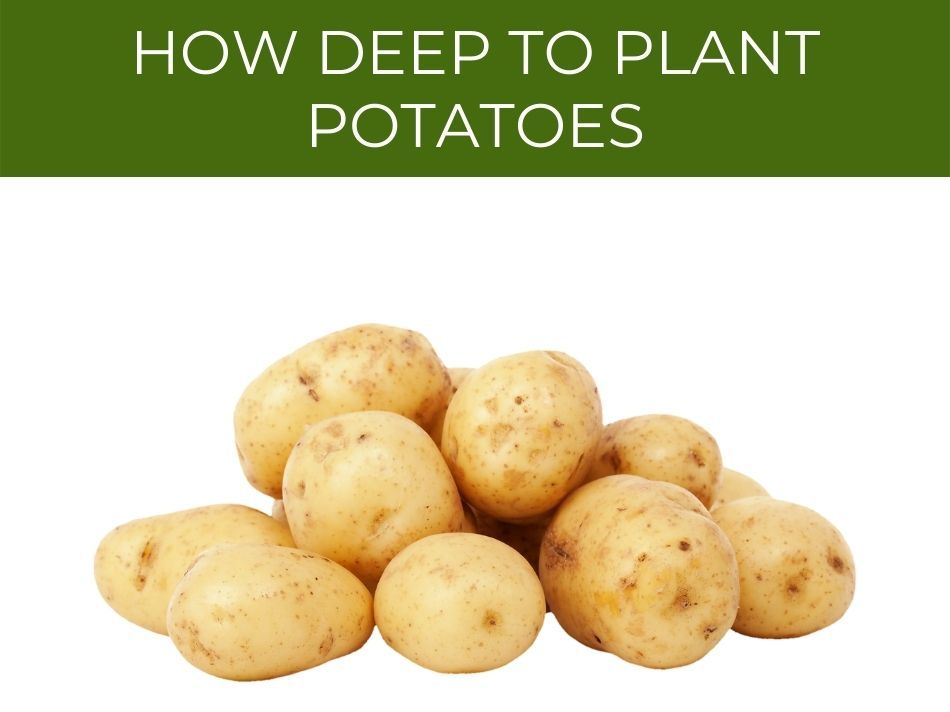
How deep to plant potatoes
Deciding on how deep to plant potatoes has a lot to do with your ultimate goal for harvesting.
According to Cornell University, shallow planting should be initiated about two to four weeks prior to the final frost, before spring, and the temperature of the soil should be at least 40 °F.
Ideally, the PH balance should sit between a range of 5.0 to 7.0, and the solid should be well-drained but not drenched, light, and loose.
Plant seed potatoes in the center of a trench about 4” deep for shallow planting. When seedlings reach 6 -8 inches in height, pile a mound of loose soil, about 1” from the lowest leaves. This helps prevent overexposure from the sun. Plant potato seedlings 7 – 8” deep for deep planting.
Keep in mind that planting potato seedlings too deep will cause the potato seedling to rot before it is able to sprout.
Note that deep versus shallow potato planting will each yield a harvest at a different time of the year.
Tubers will mature in 90 to 120 days or can be left for the next harvesting season. Potatoes are perennial, which means that even if the frost kills the foliage at the top, the tubers are still able to send new growth during the next spring.
In colder climates, tubers are harvested each year and potatoes are considered to be annuals.
See the complete guide on how to grow potatoes.
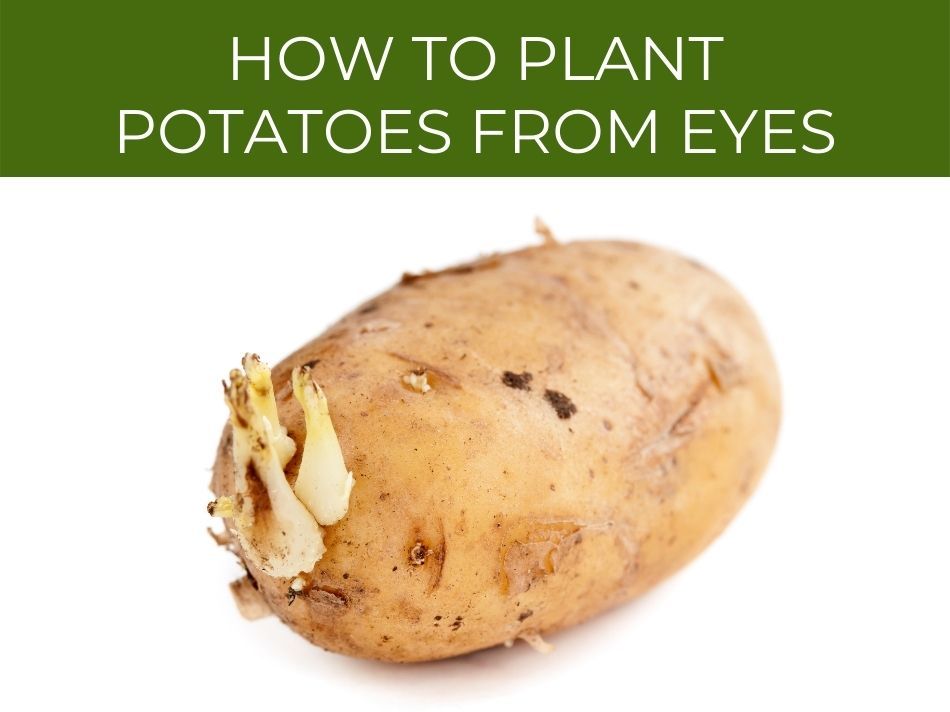
How to plant potatoes from eyes
Potatoes generally have buds on the surface which we call the eyes of the potato and sprouts form from these eyes.
They are the potato’s axillary buds from which other potatoes can grow.
Usually, when you see the sprouts on the surface of the potato, you’ll know that this is a sign the potato will spoil soon, but studies reveal that if the sprouts are in the initial phase of forming, the potato is still safe to consume, provided that the sprouts are removed.
Start by digging a trench that is six to eight inches deep. Cut the potato into equal parts, each with an eye. Place the potato in the trench with the cut side facing down and the eye facing up towards the surface. The rows should ideally be spaced around 3 feet apart.
Interestingly, every one of the eyes on the potato will spring new life.
If the potato is 1 to 2 inches in diameter, roughly the size of an egg, it can be planted whole.
Regardless of how many eyes are visible on the potato seed, make sure that one healthy eye is facing upwards when planting the potato seeds.
See how to grow baby potatoes.
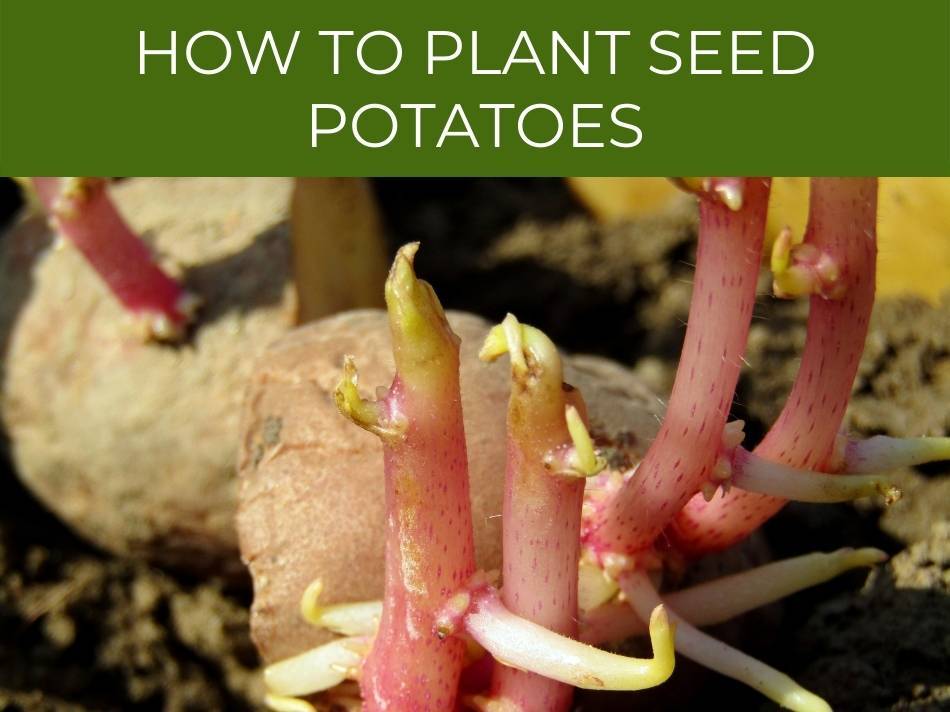
How to plant seed potatoes
Regular potatoes are commercially grown and treated with sprout inhibitors to prevent eyes and sprouts from forming on the surface while the potatoes are on the shelf or in storage.
Seed potatoes, on the other hand, are not treated with sprout-inhibitors and are sold either online or in garden centers.
Seed potatoes are tested for viruses, bacteria, and nematodes and carry a certified label which indicates their safety as a growing potato.
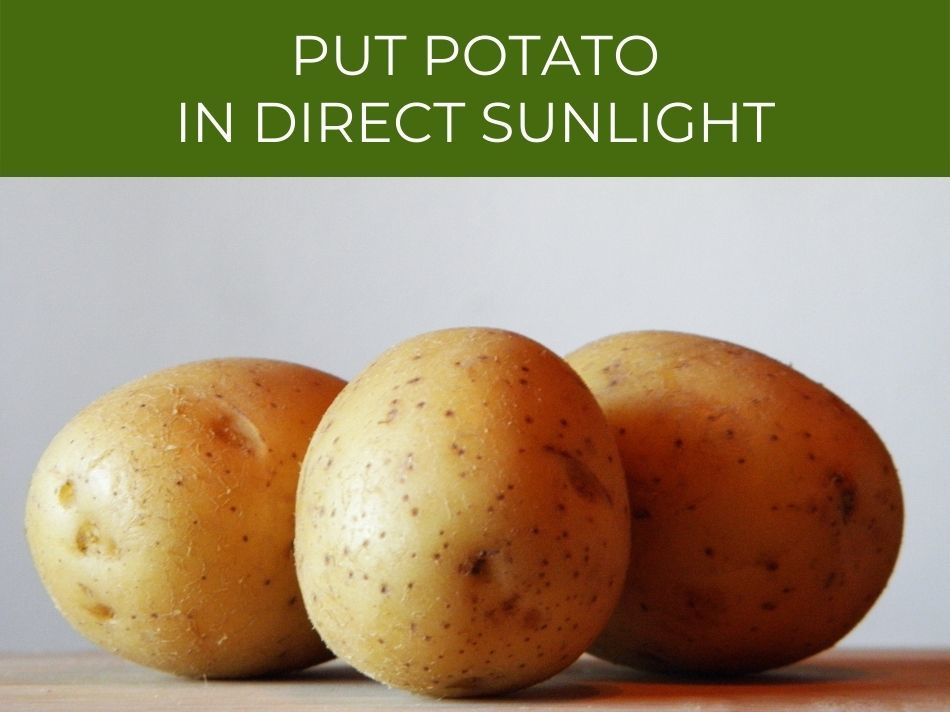
To plant seed potatoes, initiate sprouting by putting potatoes in direct sunlight between 60 – 70F. Before planting, cut larger potatoes into 2” pieces with at least one eye or bud. Plant the seed potatoes 6-8” deep, in rows spaced 3 feet apart.
Keep in mind that the soil is the heart and soul of this process.
Cultivate the soil at least a week prior to planting the seed potatoes, making sure that the soil is well moistened, loose, light, and has the correct PH balance.
Check out how to grow sweet potatoes.
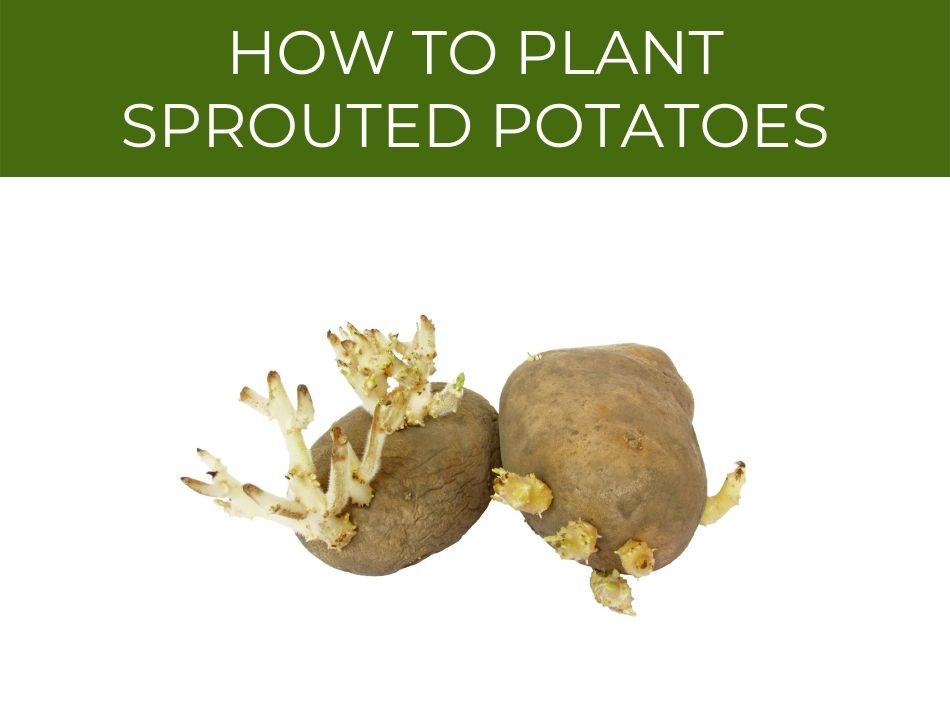
How to plant sprouted potatoes
Sprouted potatoes are planted so that they can grow more potatoes.
Just one sprouted potato can produce several potato plants as well as plenty of new potatoes.
Sweet, yellow, or even white potatoes that have sprouted can be planted to form new potatoes.
Mount soil into rows. This is known as prepping the garden soil for planting. Count the potato sprouts, cut them, then plant each potato sprout. Planting potato sprouts is very similar to planting seed potatoes. The eye should be facing up & the cut should be facing down.
Continue to water & weed around the potato plant.
Ideally, for an early harvest, you could plant the sprouts roughly four inches deep in the soil.
The spacing between the plants is important as the plants need sufficient room to grow. If the sprouts are placed too close to each other, it will prevent them from growing.
Find out if you can grow plants without soil.
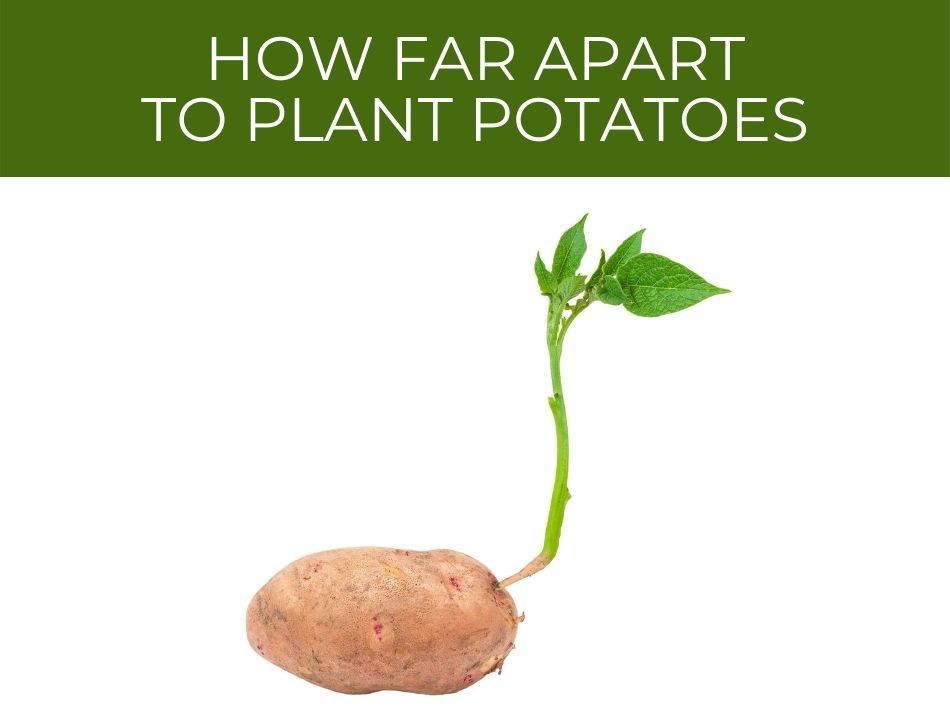
How far apart to plant potatoes
Spacing between the potatoes is very important.
As previously mentioned, if the potatoes are planted too close to each other they will not grow to their full potential and may even stop growing.
Regular sprouted potatoes and seed potatoes should be planted 12 to 15 inches apart. Baby potatoes may require less space, but it is advisable to also plant them roughly 10 to 12 inches apart.
In addition to the plants not growing fast enough or at all, there are certain pests that love to feed on plants that grow very closely to each other, such as the potato beetle.
And, overcrowding the potatoes will result in a lower yield, if at all.
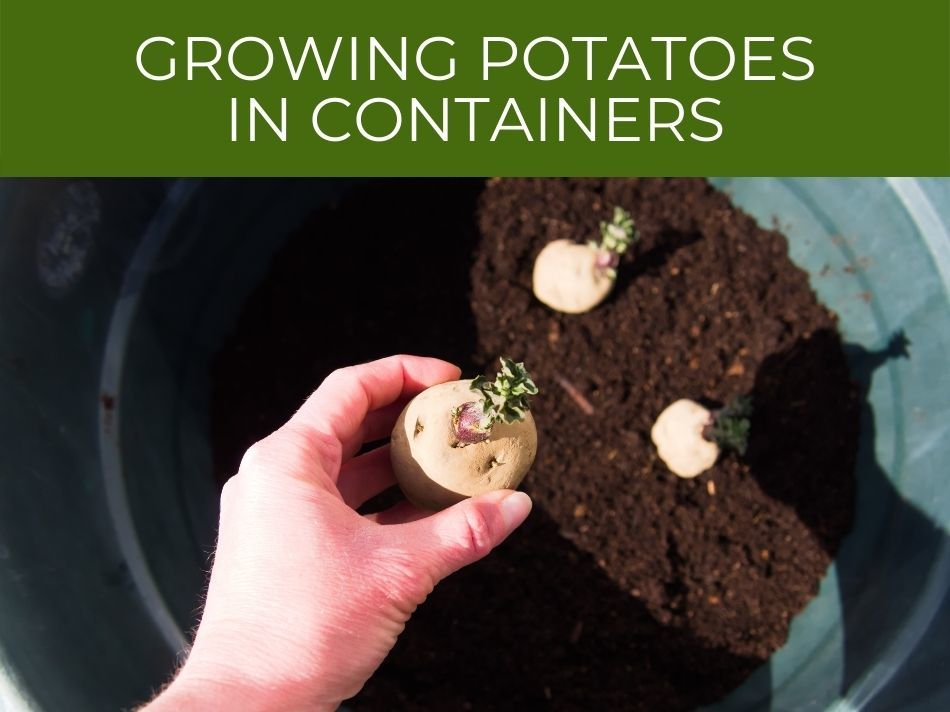
Growing potatoes in containers
Potatoes are root plants that need space in the soil in order to grow to their full potential.
However, if you do not have much of a garden to grow potatoes, then not to worry, as potatoes can be grown in containers.
To grow potatoes in containers, mix potting soil with compost & fertilizer. Put 2” potato pieces 4-6” apart, in full sun where temperatures are 60-70F to stimulate sprouting. Place the seed potato or sprouted potato in the soil with the eye facing up. Soil should be moist, not soggy.
The plants will grow fairly large.
It’s important to make sure that there is enough room at the bottom of the container and that the seed potatoes are planted far apart enough, in order to grow optimally..
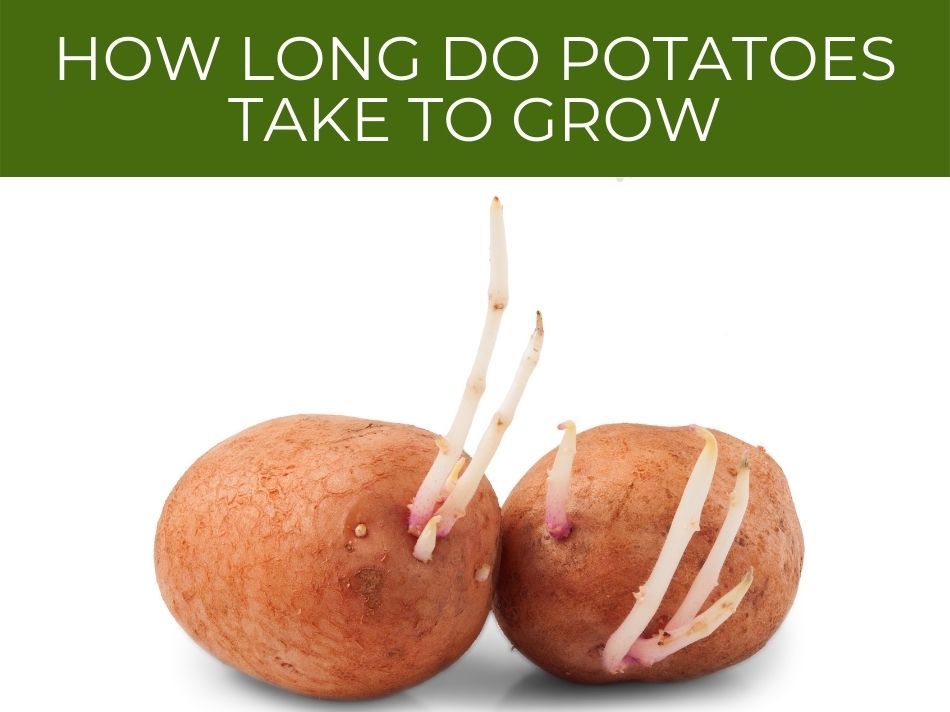
How long do potatoes take to grow
The growth of your potatoes will be determined by several factors including the temperature of the soil, the condition of the soil, the depth at which the seed potatoes were planted, ect.
Keep in mind, that shallow-planted potatoes will be harvested much sooner than deep-planted potatoes.
Small potatoes will be ready within 10 weeks. Potatoes that grow to full maturity, on the other hand, will take 80 to 100 days. Shallow planted potatoes can be harvested as soon as 2 – 4 weeks.
The potatoes are ready when the vines have died.
This is your indication that the potatoes are ready to be harvested.


